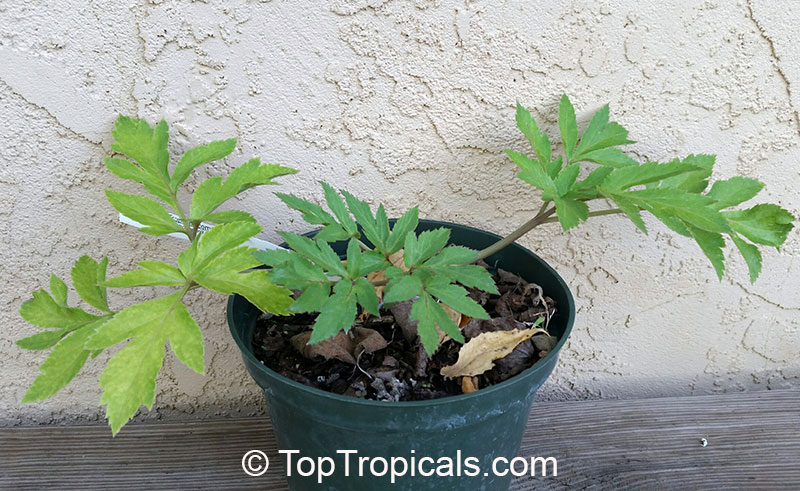Angelica keiskei (Ashitaba)
Top Tropicals Plant Encyclopedia
Botanical name: Angelica keiskei
Common names: Ashitaba, Tomorrows Leaf, Koidzumi
Family: Apiaceae / Umbelliferae
Origin: Japan








Angelica keiskei, more popularly known as Ashitaba (meaning Tomorrow's Leaf) is an herbaceous, non-frost tender, perennial plant from the Angelica genus. It is endemic to HachijÅ-jima, an island of Japan. The plant's additional cultivar epithet, koidzumi, is a nod to the botanist Genichi Koizumi, while the Japanese nomenclature of Ashitaba comes from its amazing regenerative capabilities. When a leaf at the break of dawn is harvested, a new sprout can often be seen growing overnight.
With a known traditional history of aiding in the healthier extended lives of the local residents, the plant's health benefits are attributed to its high levels of Vitamin B12, as well as the chalconoids that are found only in this particular species of Angelica.
Angelica keiskei is now mainly cultivated for use in regional cuisine in the forms of soba, tempura, tea and even ice-cream. It can be grown both in the wild and in containers, and it is best grown in moist soil in partially shaded areas, with sufficient water and fertilizer. Mature plants will reach a height up to 5 feet, and are best suited to warmer regions of USDA Zone 7-10. In colder climates, it is advised to quite simply grow plants in a sunny container and bring them to shelter during any cold weather.
This species is known to have a great deal of ethnomedical uses, both in traditional Chinese and Japanese herbal medicine, while also being highly sought-after in gardens due to its sweet-aromatic scent and colorful foliage. On top of this, Angelica keiskei can also be used as an herb or spice in regional cuisines, adding a great condiment ingredient, preservative and flavor enhancer.
In summary, Angelica keiskei is truly a unique plant and is worthy of being added to any garden.



